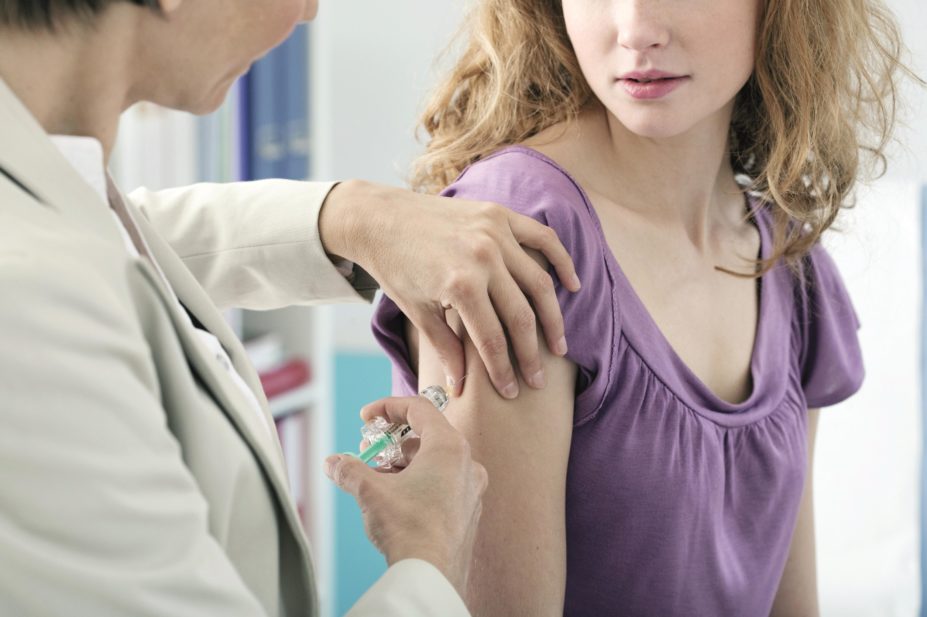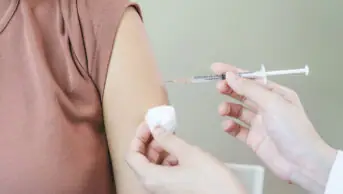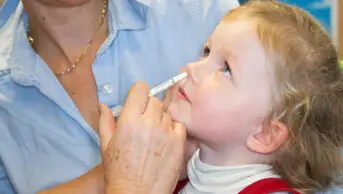
Shutterstock.com
Researchers have developed a new nine-component vaccine against human papillomavirus (HPV) which they believe could offer the potential to increase overall protection against cervical cancers from around 70% to 90%, according to a study published in The New England Journal of Medicine
[1]
on 19 February 2015.
The new vaccine (9vHPV) is active against nine sub-types of HPV — the four sub-types (6, 11, 16 and 18) in the quadrivalent HPV vaccine introduced in 2006, plus five additional types (31, 33, 45, 52 and 58). Current HPV vaccines address around 70% of cervical cancers through protection against HPV types 16 and 18.
The double-blind phase 2b-3 study, which was funded by Merck, randomised 14,215 young women (aged 16 to 26 years old) to either the nine-component vaccine or the existing quadrivalent HPV vaccine (qHPV). Participants received three intramuscular injections at day 1 and at months 2 and 6.
The nine-component vaccine had an efficacy of 96.7% against high-grade cervical, vulvar and vaginal disease related to HPV types 31, 33, 45, 52 and 58 (rate of disease was 0.1 per 1,000 person years in the 9vHPV group and 1.6 in the qHPV group; 95% confidence interval of 80.9 to 99.8).
In the intention-to-treat population, the researchers did not find the nine-component vaccine to be more beneficial than the quadrivalent vaccine; the authors of an accompanying editorial[2]
hypothesise that these results were due to the fact that so many of the study participants had already been infected with the five HPV types added to the new vaccine by the time the study started.
The antibody responses to the five additional HPV types were equivalent to those seen in the quadrivalent vaccine, but the study’s authors note that “adverse events related to injection site” were more common in women receiving the nine-component vaccine than those on the quadrivalent version.
In a separate press release[3]
, the researchers led by a team from the Medical University of Vienna said the new nine-component vaccine was 20% more effective against cervical cancer than the existing quadrivalent vaccine, up to 30% more effective against the early stages of cervical cancer and up to 5–15% more effective against other types of cancer, such as vaginal or anal carcinomas.
“It’s a milestone because you’ve got coverage of the most prevalent cancer-causing types,” says Margaret Stanley, an independent commentator who is professor of epithelial biology at Cambridge University. She notes that if the new vaccine is made widely available, “it should, in time, virtually eliminate cervical cancer”.
With 86% of cervical cancers currently found in developing countries, much will depend on the affordability of and access to the new vaccine, Stanley says, adding that there are likely to be “significant challenges in getting it out there”.
The accompanying editorial to the study highlights that even in the United States, obstacles such as insurance coverage constraints have inhibited vaccination uptake to the point that coverage for the first dose of HPV vaccination among girls aged 13 to 17 years is just 57%, lagging behind coverage of other vaccines for a similar age group by around 20–25 percentage points.
“The development of the new vaccine is very important because it offers protection against a wider range of HPV types, but from our point of view, it’s important that this vaccine is offered to both girls and boys,” says Peter Baker, the campaign director of HPV Action.
Since the development of the four-component HPV vaccine in 2006, public health focus on cervical cancer rates among younger women has meant that government vaccination campaigns have targeted girls, according to Baker. This left many young men with no protection from the virus, meaning that they are vulnerable to catching it from infected women or through sex with men, Baker says.
Meanwhile, the new vaccine also has the potential to revolutionise the screening process for cervical cancer, Stanley says, adding that focusing on detection of the virus rather than screening for abnormal cells could be a game changer for screening programmes.
References
[1] Joura EA, Giuliano AR, Iversen O-E et al. A 9-valent HPV vaccine against infection and intraepithelial neoplasia in women. New England Journal of Medicine 2015. doi:10.1056/NEJMoa1405044.
[2] Schuchat A. HPV “Coverage”. New England Journal of Medicine 2015 doi: 10.1056/NEJMe141574.
[3] Medical University of Vienna. New vaccine against HPV infections can prevent 90 per cent of conditions caused by HPV. 19 February 2015.


